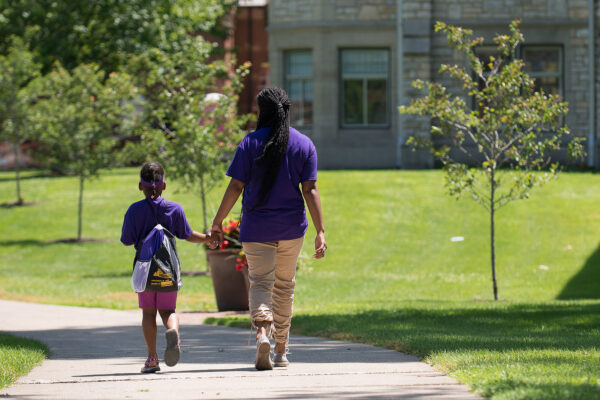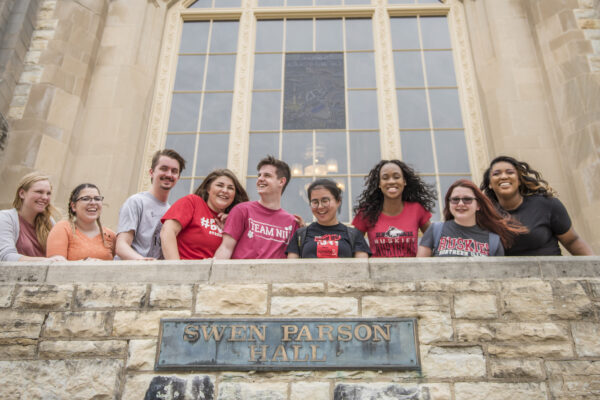“There is a lot that state legislatures can do to reverse the illiberal takeover of higher education,” according to the Manhattan Institute in its 2023 issue brief, Abolish DEI Bureaucracies and Restore Colorblind Equality in Public Universities. As the field of play in issues from abortion rules to labor policy and workers’ rights shifts from Capitol Hill to individual statehouses, state lawmakers are increasingly shaping the national debate on higher education. This shift was underscored in 2021 by J.D. Vance, then a candidate for the U.S. Senate, when he delivered the keynote at the National Conservatism Conference titled “Universities are the Enemy,” which further propelled higher education into the center of the nation’s culture wars.
Now, the good news. The influence of state lawmakers is substantial, but it quietly goes far beyond the highly publicized debates over initialisms such as DEI and CRT. When you clear away the gamesmanship, there remains an opportunity to collaborate on initiatives that have bipartisan support as well as support from campuses and the broader community—initiatives that strengthen communities, enhance economic resilience, and expand educational access.
As state legislatures prepare for their 2024–25 sessions, examining the legislative patterns from 2023–24 reveals key trends with significant national implications for campuses both now and for the years to come.
Trend lines
Our assessment of state legislative activity focuses on substantial developments in three key areas: student support, institutional mission, and workforce development.
Student support
The composition of college student bodies has shifted substantially in recent decades as campuses see more nontraditional enrollees. One-third of all undergraduates are ages 25 or older and one-fifth are parents. About 22 percent of all college students report food insecurity.
State policies around student support services and financial aid are also changing to reflect these patterns. Lawmakers’ interest is showing up in standalone investments and in broader policy initiatives.
In Michigan, the proposed Hunger-Free Campus Act would address food insecurity among students at public colleges and universities. It builds on similar legislation adopted in at least 10 other states since 2017.
Massachusetts’ recently-enacted tuition-free community college program includes a $1,200 stipend for lower-income students to cover books and other expenses. The legislature also established a separate fund to support basic-needs initiatives on campuses.
States also are attempting to increase college access by easing pathways to financial aid. Several states have enacted universal Free Application for Federal Student Aid (FAFSA) laws, ensuring that more high school seniors complete FAFSA form as a graduation requirement unless they opt out. We expect states will continue enacting policies to promote access, support, and retention, especially for those students who are traditionally underrepresented on college campuses.
Institutional mission
The U.S. Supreme Court’s landmark decision on diversity in admissions in June 2023 has started to have a ripple effect across campuses. While the decision is specific to race-conscious admissions—ending that practice—its interpretation is influencing how colleges and universities consider a range of applicants and deliver on their institutional missions.
Some legislators turned to the argument that family and monetary ties also shouldn’t have a bearing on admissions. As of July 1, Maryland is the third state to ban the use of legacy considerations in college and university admission practices. Colorado took the step in 2021, and Virginia did so just this spring. And as The Hechinger Report noted, state lawmakers in California, New York, Massachusetts, and Minnesota are weighing similar proposals.
Federal lawmakers are also joining the conversation. Under a bipartisan bill from Sens. Tim Kaine of Virginia and Todd Young of Indiana, institutional accreditation standards would keep colleges and universities from offering preferential treatment based on applicants’ relationships with alumni or donors.
At the same time, critics have also leaned on the court decision to throttle race-conscious financial support. In Ohio, a spokesperson for Ohio Attorney General Dave Yost cautioned that “race-based scholarships discriminate on the basis of race in rewarding benefits” and would be unconstitutional. The University of Missouri System said it would discontinue race- and ethnicity-informed scholarships after a warning from Missouri Attorney General Andrew Bailey. And in Texas, a law that restricts spending on DEI initiatives led public colleges to suspend or revise 131 scholarships.
Because the court’s reversal doesn’t address financial aid specifically, these and similar moves have spawned widespread scrutiny. The Washington Post found nearly 50 colleges and universities have paused, discontinued, or restructured hundreds of race-conscious scholarships worth millions of dollars. As the Post noted, worries center on long-term implications for the diversity of student populations. Admissions practices appear to be settling, but the availability and eligibility requirements of financial aid could continue to shift depending on the political environment and legal precedents. In Missouri, some benefactors have weighed legal action after the University of Missouri pulled racial criteria from the grant they helped to create.
Workforce development
While enrollments and the perceived importance of higher education have declined, states are making targeted investments in financial aid and other mechanisms to drive workforce development. Much of this emphasis is in high-demand fields in which economists expect long-term job growth. Hand-in-glove cooperation guides these efforts, which have become a promising collaborative model for state and campus leadership amid headline-grabbing culture wars.
In New York, Governor Kathy Hochul announced an expansion of tuition assistance to cover hundreds of nondegree programs in The State University of New York and The City University of New York systems. This effort applies specifically to programs that “lead to jobs in high-demand, growing fields,” Hochul’s office wrote in a February press announcement. A month earlier, she introduced an artificial intelligence (AI) consortium—Empire AI—that includes five New York universities. By amplifying collaboration, the group will promote AI-related job growth in the state, according to the Hochul administration.
California Governor Gavin Newsom leveraged higher education in his executive order on AI, issued this past fall. A partnership among three universities will dig into generative AI and how the Golden State should strengthen its position in that space.
A bill this year would create the Maryland Pathway to Nursing Pilot Program, designed to support students in licensed practical nursing programs who plan to stay in the state. Kentucky started a grant program to help staff emergency medical services, in part through tuition support for trainees. Health care has become a top priority for states’ workforce development following the COVID-19 pandemic.
The Indiana Commission for Higher Education offers an antidote to the national teacher shortage through the Next Generation Hoosier Educators Scholarship, which provides as much as $40,000 apiece to undergraduate students pursuing education degrees. If they teach for five years at an approved school in Indiana, they don’t have to pay the money back. Three hundred high school seniors won the scholarships this summer.
Another way to reinforce the teaching ranks—an apprenticeship model—can open up federal grants, including those available through the Workforce Innovation and Opportunity Act. Often labeled as a Grow Your Own approach, apprenticeship programs empower school workers such as front-office staffers and paraprofessionals to transition into full-time teaching through on-the-job training.
States can build supplemental financial aid to support apprenticeships. Flexible funding formulas are key, as local school systems need to invest in specific programs and subjects where they have the greatest hiring needs. Each of the 50 states and the District of Columbia have reported teacher shortages in at least one subject or grade level, with substantial variation across states and localities.
For lawmakers, maximizing returns from workforce investments can be a delicate dance. They can’t invest so much in a particular sector that workers end up exceeding demand. They also need to establish which fields will benefit most from education in a classroom or other preparatory setting and which ones will gain more from on-the-job training. Targeted scholarships may be the most useful tools for students in the former. But in the latter, investments in outreach, awareness-building—and the possibility of credit transfer and mobility—might be the smarter move.
In short, to make the highest use of public resources, lawmakers need to understand their regional job markets and individual growth sectors, credit potential, and the best modes of training and preparation for each. Campus colleagues are prime resources for that insight. We expect their joint efforts to continue bearing fruit for a vibrant workforce.
Predictions and a recommendation
As financial and competitive pressures in higher education intensify, state legislatures are under their own pressure. We expect lawmakers will seek to recognize colleges and universities that fulfill their missions and effectively support shared goals to advance the public interest. But how can these institutions be supported—in a timely way—as they’re improving operations and enrolling students in need?
Illinois may prove a pioneer. The Prairie State is contemplating an overhaul of its postsecondary funding formula to bolster support for regional colleges and universities, along with those that enroll more low-income and traditionally underrepresented students. The approach would mirror the increasing number of revamped K–12 funding models, as Inside Higher Ed indicated.
Among other developments, we expect the public focus on higher education culture will continue but with more nuance. In the aftermath of state policy efforts to dismantle DEI programs, funding, and staff, institutions will turn to internal implementation and external relations. How colleges and universities fulfill their primary responsibilities while navigating critical stakeholder and community relationships will set an important tone.
In another area, centralized leadership from Washington is critical for clear and unified worker protections. State-level policy on workers’ rights can become fragmented and confusing, especially for participants in a national market such as student-athletes. Right now, competitive athletes at the college level navigate 50 different systems—one in each state—as they determine where to enroll. A national standard at the federal level is a needed game-changer.
It’s clear that judicial assessments and state policy decisions will continue gathering influence. Critical indicators forecast a rocky road for federal influence and power. Between congressional gridlock and the Supreme Court’s recent reversal of Chevron deference—which diminished regulatory authority at the federal level—it’s clear that judicial assessments and state policy decisions will continue gathering influence. The impact will be especially sharp for colleges and universities.
As we enter the fall braced for a presidential election, campus politicization, and wider social strife that will provoke ideological flashpoints, our universal pillars of shared community, economic growth, and education access continue to stand strong. We see the fundamental alignments between state governments and higher education that remain robust. Whether motivated by optimism or mutual self-interest, these shared drivers exist within the guardrails of public accountability and the incontrovertible value of higher education and a democratic society. We all have a role in proactively seeking these opportunities and engaging with them as they arise because our collective work will advance a positive aggregate impact on higher education, shared communities, and our democratic society as a whole.
If you have any questions or comments about this blog post, please contact us.




